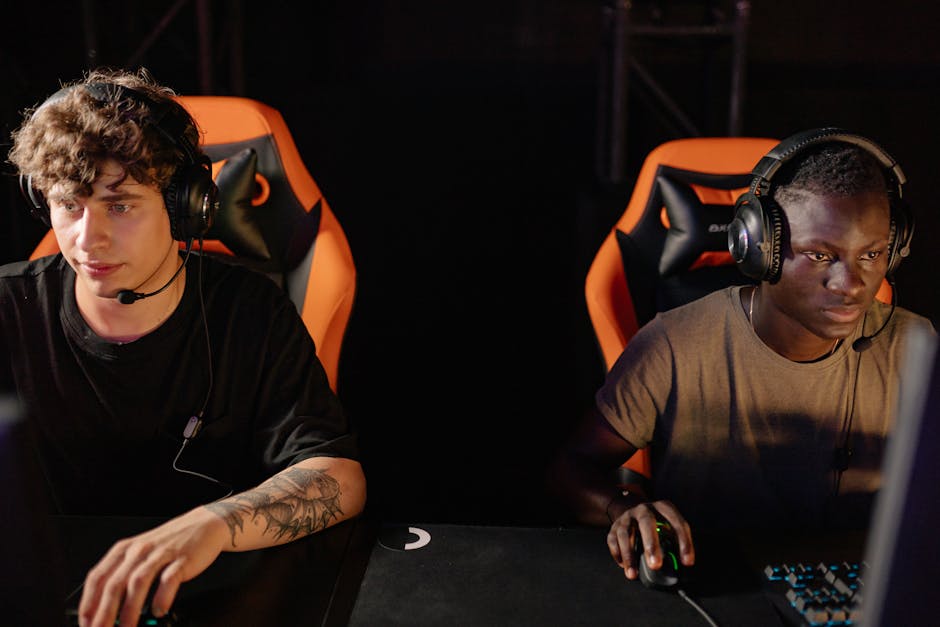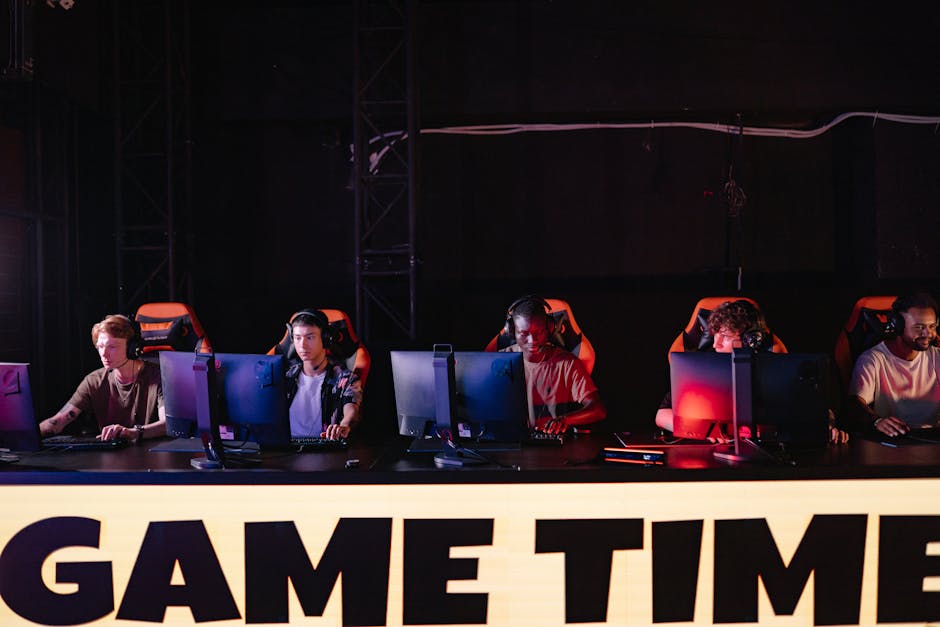Tips for Reducing Lag in Online Sailing Games
Online sailing games offer a thrilling virtual experience for gamers, allowing them to navigate the high seas, engage in exhilarating races, and test their sailing skills against players from around the world. However, one common frustration that many players encounter while playing these games is lag. Lag, often caused by high latency or slow internet connection, can disrupt gameplay, making it difficult to steer the ship, react to obstacles, or compete effectively. In this comprehensive guide, we will explore various tips and strategies to help reduce lag in online sailing games, ensuring a smoother and more enjoyable gaming experience.
The Impact of Lag on Online Sailing Games

Lag can have a significant impact on the overall gameplay experience in online sailing games. When a player experiences lag, there is a delay between their actions and the game’s response, leading to sluggish controls, jerky movements, and overall frustration. In a fast-paced and competitive environment like online sailing games, lag can mean the difference between winning and losing a race or completing a mission successfully.
Furthermore, lag can also affect the social aspect of online sailing games, as players may struggle to communicate with teammates or coordinate their efforts effectively. To address these challenges and optimize the gaming experience, players need to implement various strategies to reduce lag and improve performance.
Optimizing Internet Connection for Online Sailing Games

One of the most critical factors influencing lag in online sailing games is the quality of the player’s internet connection. To minimize lag and ensure a smooth gaming experience, players should consider the following tips:
1. Use a Wired Connection:
For optimal stability and speed, players should use a wired ethernet connection instead of relying on Wi-Fi. Wired connections are less prone to interference and offer a more consistent and reliable connection, reducing the likelihood of lag spikes during gameplay.
2. Upgrade Your Internet Plan:
If you frequently experience lag in online sailing games, consider upgrading your internet plan to a higher speed or a more reliable service provider. Faster internet speeds can help reduce latency and improve overall performance during gameplay.
3. Close Background Applications:
Background applications and programs running on your device can consume bandwidth and CPU resources, leading to increased latency and lag in online games. To optimize performance, close unnecessary applications before launching the game.
4. Limit Bandwidth Usage:
Streaming services, downloads, and other bandwidth-intensive activities can compete for network resources and cause lag in online sailing games. To prioritize gaming performance, limit bandwidth usage on other devices connected to the same network while playing.
Adjusting In-Game Settings for Better Performance

In addition to optimizing internet connection, players can also adjust in-game settings to reduce lag and improve performance in online sailing games. By tweaking graphics, audio, and network settings, players can achieve smoother gameplay and a more responsive gaming experience.
1. Lower Graphics Settings:
High graphics settings can strain your device’s resources, leading to increased latency and lag during gameplay. To improve performance, consider lowering graphics settings such as resolution, texture quality, and effects to reduce the load on your system.
2. Disable V-Sync:
Vertical synchronization (V-Sync) can introduce input lag in online sailing games by synchronizing the game’s frame rate with the monitor’s refresh rate. To reduce lag and improve responsiveness, consider disabling V-Sync in the game settings.
3. Adjust Network Settings:
Some online sailing games offer network optimization settings that allow players to adjust parameters like tick rate, server location, and packet size. By fine-tuning these settings based on your internet connection, you can reduce latency and achieve a smoother gaming experience.
4. Monitor FPS and Ping:
Monitoring your frames per second (FPS) and ping during gameplay can help you identify performance issues and troubleshoot lag effectively. Keep an eye on your FPS to ensure smooth visuals and check your ping to assess network latency and stability.
Utilizing VPNs for Lag Reduction

Virtual Private Networks (VPNs) can also be a valuable tool for reducing lag in online sailing games. By connecting to a VPN server closer to the game’s server location, players can minimize latency and improve network performance. Additionally, VPNs can help bypass geo-restrictions and enhance security while gaming.
1. Choose a Reliable VPN Provider:
When selecting a VPN for gaming, choose a reputable provider with fast servers and a strong track record of performance. Look for VPNs with low latency, high-speed connections, and a wide server network to ensure a smooth gaming experience.
2. Connect to Nearest Server:
To reduce latency and minimize lag in online sailing games, connect to a VPN server located closest to the game’s server location. By choosing a server with a shorter physical distance, you can improve network performance and responsiveness during gameplay.
3. Optimize VPN Settings:
Configure your VPN settings to prioritize speed and stability for gaming. Enable features like split tunneling, protocol selection, and kill switch to enhance performance and protect your privacy while playing online sailing games.
Regular Maintenance and Updates
Regular maintenance and updates are essential for optimizing performance and reducing lag in online sailing games. By keeping your hardware, software, and network infrastructure up to date, you can ensure a smooth and seamless gaming experience.
1. Update Drivers and Firmware:
Make sure to regularly update your graphics card drivers, network adapters, and firmware to the latest versions. Updated drivers can improve compatibility, performance, and security, reducing the risk of lag and technical issues during gameplay.
2. Clean Up Your Device:
Over time, your device may accumulate unnecessary files, temporary data, and system clutter that can impact performance. Perform regular disk cleanup, defragmentation, and maintenance tasks to optimize your device’s performance and reduce lag in online sailing games.
3. Monitor Temperature and Performance:
High temperatures can cause hardware components to throttle, leading to decreased performance and potential lag in games. Monitor your device’s temperature, CPU/GPU usage, and performance metrics to identify any issues and address them proactively.
Common Misconceptions about Lag in Online Sailing Games
Despite the prevalence of lag in online gaming, there are several misconceptions and myths surrounding its causes and solutions. Let’s debunk some common misconceptions about lag in online sailing games:
1. Myth: Lag is Always Caused by the Game Server.
While game servers can contribute to latency and lag, factors like internet connection, hardware performance, and network congestion also play a significant role. Addressing these factors can help reduce lag in online sailing games, even if the server is not the primary cause.
2. Myth: More Bandwidth Equals Less Lag.
While a higher bandwidth connection can improve overall performance, it does not guarantee a lag-free gaming experience. Latency, packet loss, and network stability are equally important factors in reducing lag, regardless of the available bandwidth.
3. Myth: Closing Background Applications Eliminates Lag.
While closing unnecessary applications can free up system resources and improve performance, it may not always eliminate lag entirely. Other factors like network congestion, server latency, and hardware limitations can still contribute to lag in online sailing games.
Conclusion
Reducing lag in online sailing games is essential for maximizing performance, responsiveness, and overall gaming enjoyment. By optimizing internet connection, adjusting in-game settings, utilizing VPNs, and performing regular maintenance, players can minimize latency and ensure a smooth gaming experience. Remember that lag can impact not only your gameplay but also your interactions with other players, so taking steps to reduce lag is beneficial for everyone involved.
Whether you’re a seasoned sailor or a novice navigator, implementing these tips and strategies can help you sail smoothly through the virtual seas and emerge victorious in online sailing games. So, set sail, embrace the challenge, and navigate your way to a lag-free gaming experience!




